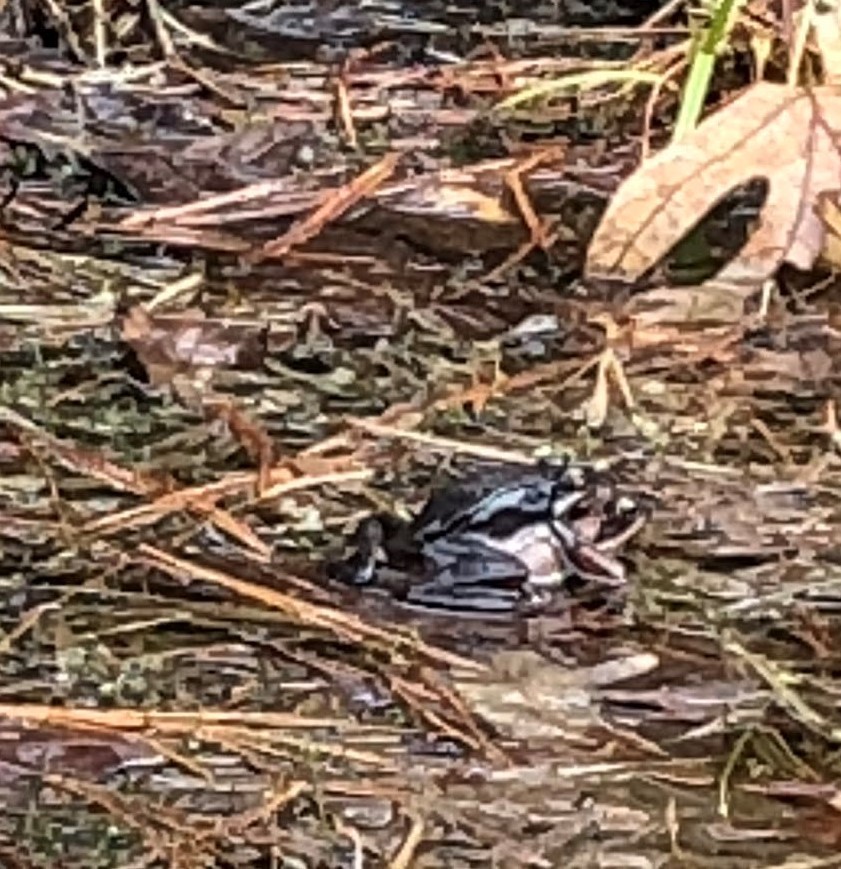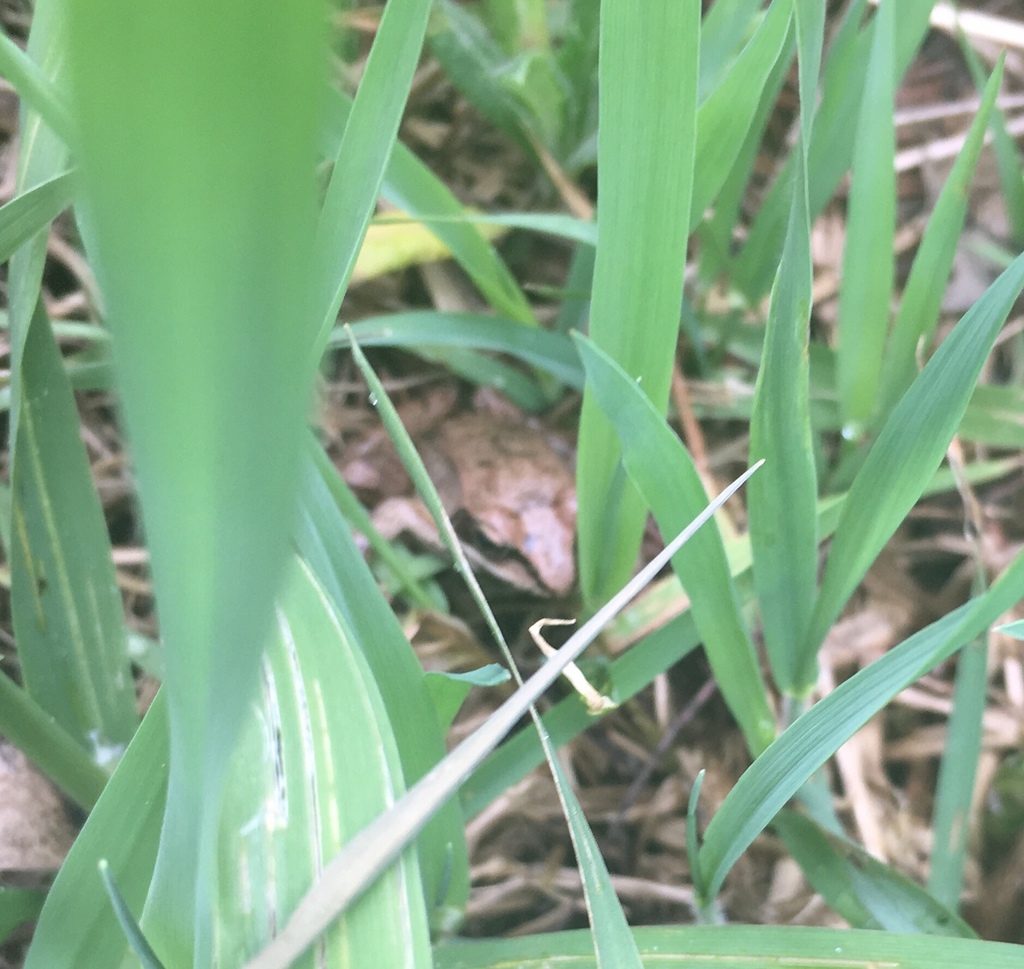Between Leaf Litter and Earth: Red-Backed Salamanders at Wellesley
Walking around Wellesley as spring unfolds, showy trees bloom in brilliant floral displays and lively birds sing. But concealed on the forest floor are small red-backed salamanders (Plethodon cinereus), which crawl between soil and a thick layer of leaf litter. These amphibians often go unnoticed by the Wellesley community—yet it’s possible that they play a major role in Wellesley’s small forest ecosystems.

A red-backed salamander found near Lake Waban.
Small and unobtrusive, red-backed salamanders generally do not exceed 10 cm in length. Despite their terrestrial life, they have evolved to be lungless: they breathe through their thin skin in moist environments, constrained to the dark, damp forest floor. This seeming limitation—lunglessness—is hardly a barrier, as the salamanders take full advantage of the forest floor, consuming small invertebrates like worms, millipedes, fly larvae, and collembola.
Throughout the northeast United States, red-backed salamanders are one of the most abundant vertebrate species in forest ecosystems, occurring at densities of up to eight individuals per square meter! They are so abundant that their total biomass alone equals that of all small forest mammals combined, and is double that of passerine birds. Red-backed salamanders are common predators of invertebrate “detritivores”, tiny animals that feed on dead organic material like leaf litter and rotting logs. Because red-backs are so abundant, by consuming detritivores they slow down the decomposition of logs and leaf litter on the forest floor, and can shift the structure of entire food webs!
But while red-backed salamanders are abundant in northeastern forests, what about at Wellesley, where the suburban campus landscape is relatively fragmented? Roads, paths, buildings, and heavily managed green spaces slice through small forest patches, creating a disjointed matrix of red-backed salamander habitat. Red-backed salamanders are sensitive to environmental perturbations, including disturbance caused by humans. Can small forest patches in areas of high human impact still support red-backed salamander populations?
To understand this question better, in early April we deployed more than sixty small wooden boards, called coverboards, arranged in transects at several locations across campus. Coverboards create habitat for red-backed salamanders, which use them for shelter, similar to how they might use a fallen log. We can survey an area for salamanders by simply overturning the boards and noting when and how many salamanders we see. We’ll also be collecting data on the invertebrates we find in an effort to further document Wellesley’s biodiversity.
Map of coverboard locations at Wellesley. Coverboards are arranged in transects. Salamanders have been found under the coverboards by Lake Waban and in other areas on campus near the Science Center.

Coverboards are small 12”x12”x2” square boards that mimic red-backed salamander habitat.
Over time, we hope to discover the extent to which Wellesley’s matrix of forest habitat and built landscape can support red-backed salamanders. We’ll also be able to detect trends in the red-backed salamander population, which might help us understand overall changes in environmental quality, especially as it relates to biodiversity and human disturbance.

A red-backed salamander found in a small forest fragment by Wellesley’s Science Center.
We’re thankful to have these small amphibians contributing to biodiversity at Wellesley, and are excited for the discoveries ahead as we begin to monitor them more carefully. What kinds of creatures or plants are you seeing at Wellesley and beyond? Take some photos and upload them to iNaturalist, and direct message us on instagram (@wellesleypaulson), to show us what you’ve been spotting!


















